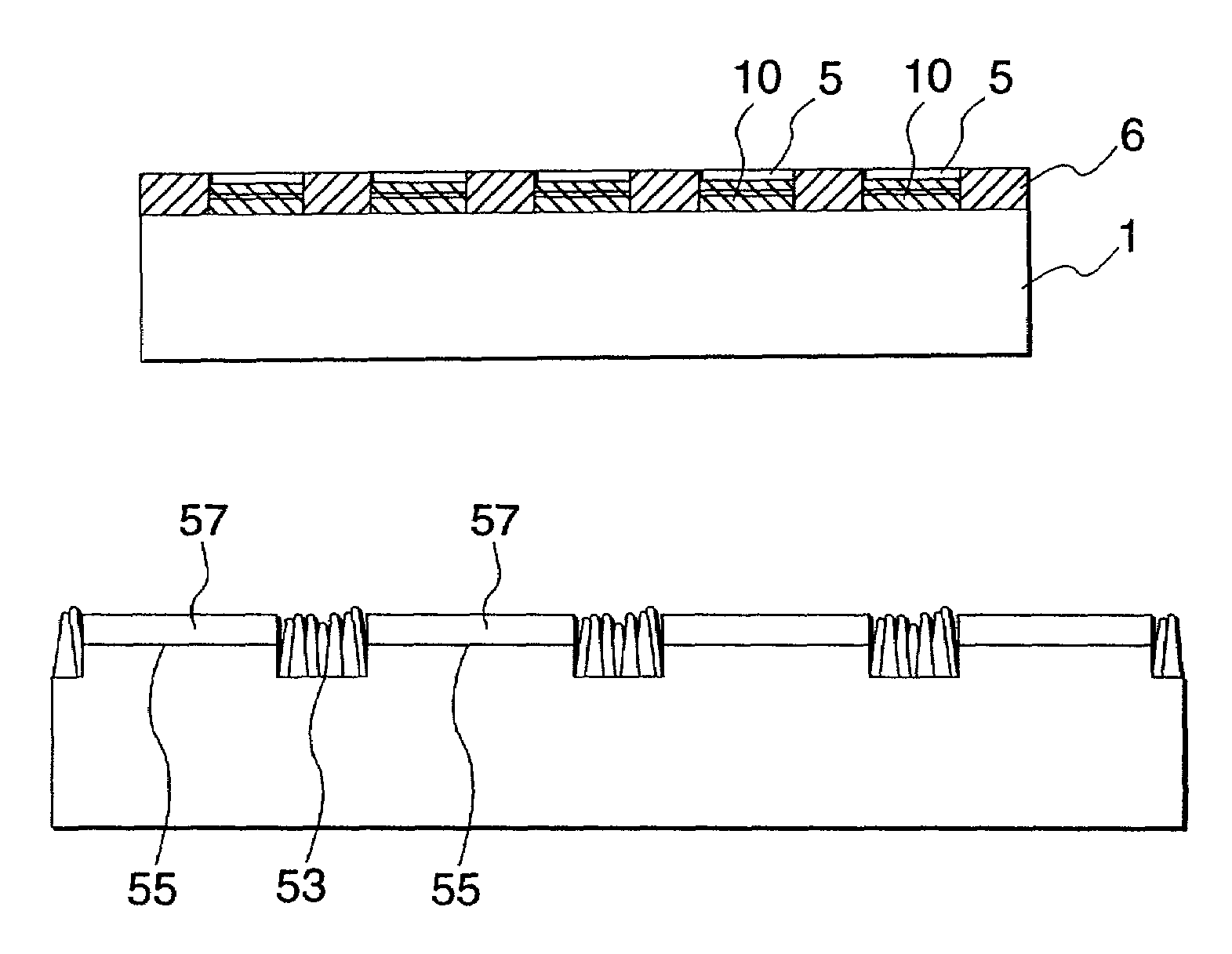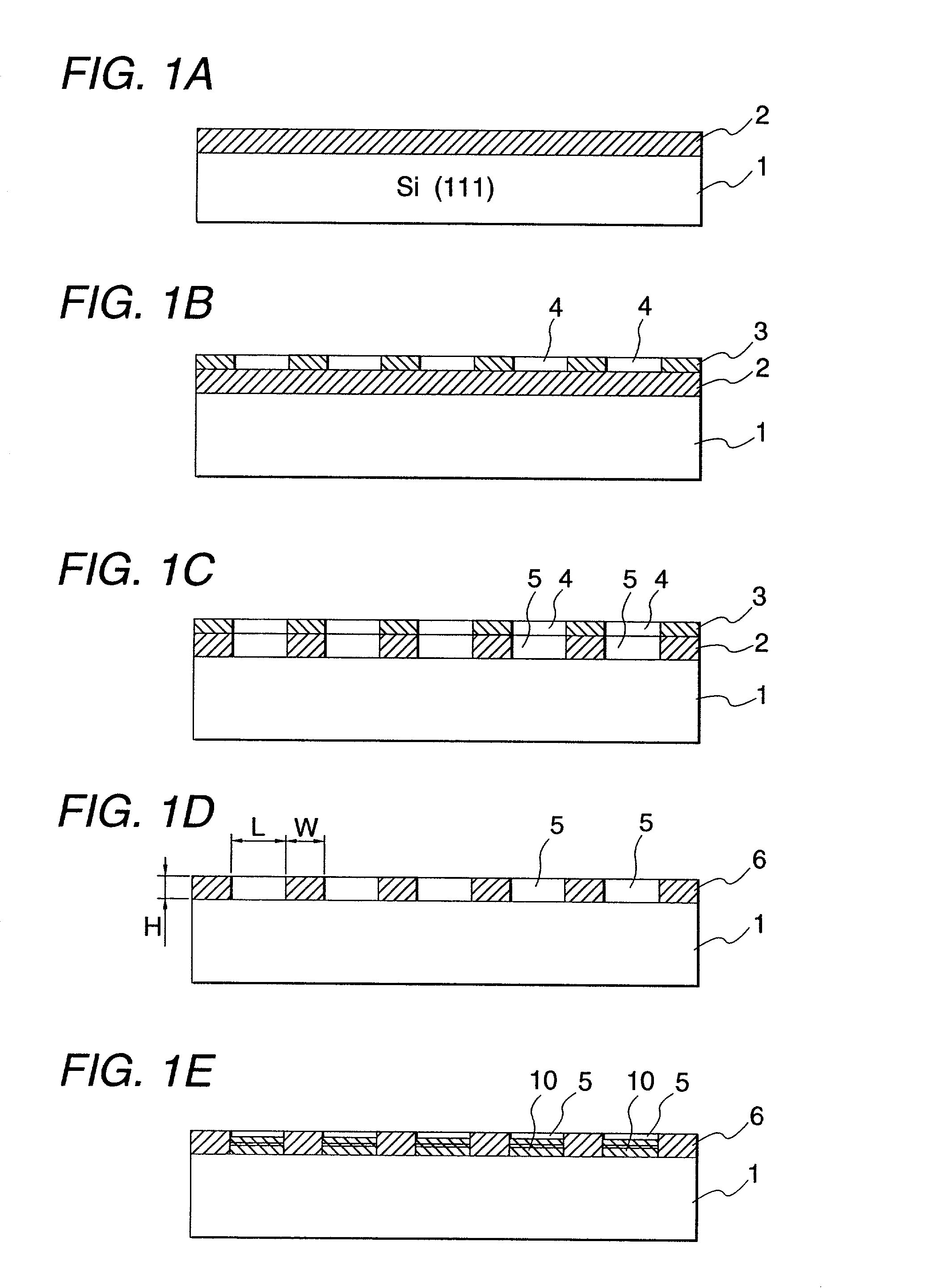Group III nitride compound semiconductor device and method for producing the same
a technology of nitride and compound semiconductors, applied in the direction of semiconductor lasers, solid-state devices, semiconductor lasers, etc., can solve problems such as cracking, and achieve the effect of efficiently providing to the substrate surfa
- Summary
- Abstract
- Description
- Claims
- Application Information
AI Technical Summary
Benefits of technology
Problems solved by technology
Method used
Image
Examples
first embodiment
(First Embodiment)
[0041]FIG. 1 is a process view showing the outline of a producing method according to an embodiment.
[0042]In this embodiment, a silicon substrate 1 (diameter: 2 inches) is prepared and a silicon oxide layer 2 for constituting a second environment division is formed on a (111) face of the substrate 1 by a CVD method (see FIG. 1A). The thickness of the silicon oxide layer 2 is set to be about 5.5 μm.
[0043]Then, as shown in FIG. 1B, a mask layer 3 is formed as a pattern on the silicon oxide layer 2, and the silicon oxide layer 2 is subjected to wet etching through opening portions 4 of the mask layer 3. Consequently, as shown in FIG. 1C, opening portions 5 for constituting first environment divisions are formed in the silicon oxide layer 2, so that the silicon substrate 1 is exposed in the opening portions 5.
[0044]Then, as shown in FIG. 1D, the mask layer 3 is removed. Consequently, the silicon oxide layer having the opening portions 5 form a separation layer 6.
[0045]...
second embodiment
(Second Embodiment)
[0077]A producing method according to another embodiment of this invention will be described.
[0078]As shown in FIG. 9A, for example, grooves 53 with a width W of about 25 μm and a depth H of from about 5 to about 10 μm at intervals L of 350 μm are formed in x and y directions, in a surface of a silicon substrate 51 by using half-cutting by means of a dicing blade. Thus, square portions (first environment divisions) 55 with each side about 325 μm long are formed so as to be surrounded by the 25 μm-wide grooves 53 in four directions. Each of the square portions 55 has a shape and size corresponding to the shape of a semiconductor device.
[0079]Incidentally, bottom and side faces of the grooves 53 are roughened by half-cutting by means of a dicing blade.
[0080]When a group III nitride compound semiconductor is grown on the substrate 51 provided with such grooves 53, a single crystal group III nitride compound semiconductor layer 57 of good crystallinity is grown on eac...
PUM
 Login to View More
Login to View More Abstract
Description
Claims
Application Information
 Login to View More
Login to View More - R&D
- Intellectual Property
- Life Sciences
- Materials
- Tech Scout
- Unparalleled Data Quality
- Higher Quality Content
- 60% Fewer Hallucinations
Browse by: Latest US Patents, China's latest patents, Technical Efficacy Thesaurus, Application Domain, Technology Topic, Popular Technical Reports.
© 2025 PatSnap. All rights reserved.Legal|Privacy policy|Modern Slavery Act Transparency Statement|Sitemap|About US| Contact US: help@patsnap.com



